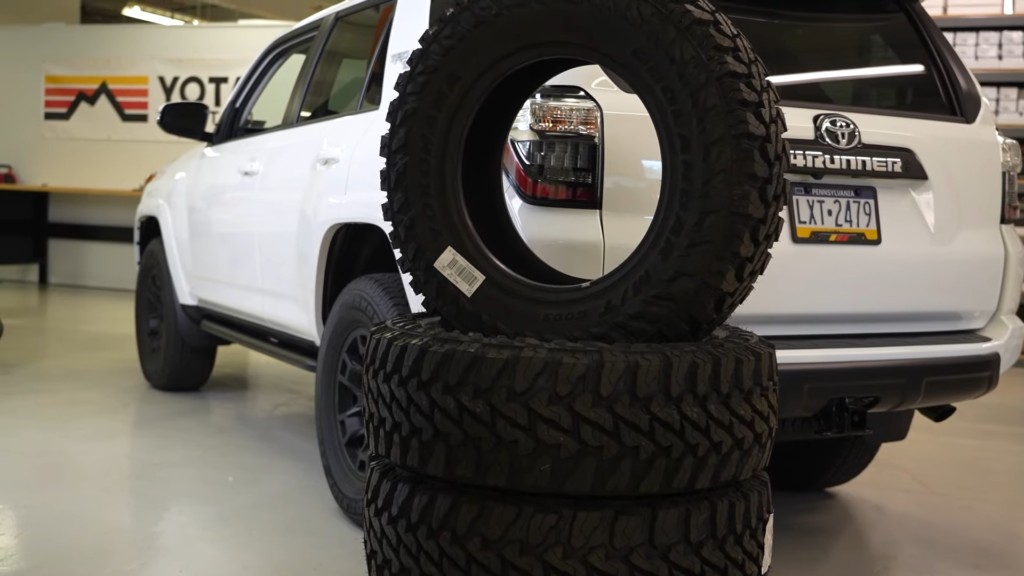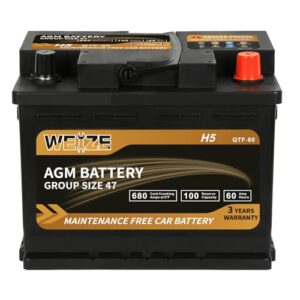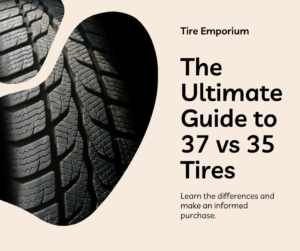Contents
Introduction
Choosing the right tire size for your vehicle is crucial for safety and performance. In this comprehensive guide, we will delve into the two popular options: 255/75R17 and 265/70R17. We’ll provide you with all the information you need to make an informed decision, backed by expertise and first-hand knowledge.
Here’s a table comparing 255/75R17 and 265/70R17 tires to help you choose:
| Feature | 255/75R17 | 265/70R17 |
|---|---|---|
| Width (mm): | 255 | 265 |
| Sidewall Height (% of width): | 75% | 70% |
| Overall Diameter (inches): | 31.7 | 31.6 |
| Tread Width (inches): | Approximately 10.04 | Approximately 10.43 |
| Load Capacity: | Varies by model | Varies by model |
| Speed Rating: | Varies by model | Varies by model |
| Handling: | Slightly less responsive due to taller sidewalls | More responsive due to shorter sidewalls |
| Off-Road Traction: | Marginally better due to taller sidewalls and wider footprint | Slightly less off-road traction but still capable |
| Ride Comfort: | Smoother ride due to taller sidewalls absorbing more bumps | Firmer ride, but handles better on pavement |
| Appearance: | Taller sidewalls provide a more rugged look | Wider tread gives a sportier appearance |
| Fuel Economy: | Slightly lower due to increased rolling resistance | Slightly better due to shorter sidewalls |
| Speedometer Accuracy: | Less speedometer error due to similar overall diameter to stock tires | May cause slight speedometer error, depending on vehicle |

Additional Considerations:
- Vehicle compatibility: Ensure both sizes fit your vehicle without rubbing or clearance issues.
- Driving style: Opt for 255/75R17 for off-road capability and comfort, while 265/70R17 suits those prioritizing handling and appearance.
- Desired look: Consider the aesthetic impact of each size on your vehicle.
The Importance of Choosing the Right Tire Size
Your vehicle’s tires play a crucial role in overall performance and safety. The right tire size ensures proper handling, stability, and traction on the road. Using the wrong size can lead to various issues, including reduced fuel efficiency and compromised safety.
Understanding Tire Size Notations
Tire sizes are specified using a combination of numbers and letters, like 255/75R17 and 265/70R17. Let’s break down what these numbers and letters mean:
- 255: This is the tire’s width in millimeters.
- 75: This represents the tire’s aspect ratio, indicating the height of the sidewall as a percentage of the width.
- R: Stands for “Radial,” indicating the tire’s construction.
- 17: This is the diameter of the wheel rim in inches.

255/75R17 vs. 265/70R17: What’s the Difference?
These two tire sizes are quite similar, but there are subtle differences that can impact your driving experience. Let’s compare them in detail:
- 255/75R17:
- -Pros: Offers a taller sidewall for better off-road performance and a smoother ride.
- -Cons: May slightly reduce fuel efficiency due to increased rolling resistance.
- 265/70R17:
- -Pros: Provides a slightly wider tread for enhanced stability on the road.
- -Cons: May have a firmer ride and slightly less sidewall flex for off-road enthusiasts.
Factors to Consider
When choosing between 255/75R17 and 265/70R17, consider these factors:
Performance and Handling
If you prioritize off-road adventures and a comfortable ride, 255/75R17 might be the better choice. However, if you need stability and handling on the highway, 265/70R17 could be more suitable.
Traction and Grip
Both sizes offer excellent traction, but 255/75R17 may perform better in muddy or uneven terrains, while 265/70R17 excels on paved roads.
Fuel Efficiency
If fuel efficiency is crucial to you, keep in mind that 265/70R17 might have a slight edge due to its lower rolling resistance.
Load Capacity
Consider your vehicle’s load capacity requirements. 265/70R17 tires can often handle heavier loads.
Tire Price and Availability
Compare prices and availability in your area. Sometimes, one size may be more affordable or readily accessible.
Expert Recommendations
Choosing between 255/75R17 and 265/70R17 depends on your specific needs. Consult with a tire expert to make an informed decision based on your vehicle, driving habits, and preferences.
FAQs
Q: Are 255/75R17 and 265/70R17 interchangeable?
A: It’s generally not recommended to interchange tire sizes unless advised by a professional. Stick to the size specified for your vehicle.
Q: Can I mix tire sizes on my vehicle?
A: Mixing tire sizes can affect your vehicle’s handling and stability. It’s best to use the same size on all four wheels.
Q: How often should I replace my tires?
A: Tires should be replaced when the tread depth reaches 2/32 of an inch or if there are signs of damage or wear.
Q: Are there any specific brands recommended for these tire sizes?
A: Many reputable tire brands offer both 255/75R17 and 265/70R17 sizes. Research and read reviews to find the best fit for your needs.
Q: Do I need to align my wheels when changing tire sizes?
A: Yes, it’s essential to have a professional wheel alignment when changing tire sizes to ensure proper handling and tire wear.
Q: How can I maintain my tires for longevity?
A: Regularly check tire pressure, rotate them, and keep up with proper maintenance to extend tire life.
Conclusion
In the debate of 255/75R17 vs. 265/70R17, there’s no one-size-fits-all answer. Your choice should align with your driving preferences and vehicle requirements. Consult with a tire expert, and consider the factors we’ve discussed to make the right decision.
============================================
Affiliate Disclosure: As an Amazon Associate, I earn from qualifying purchases made through links on this site.











